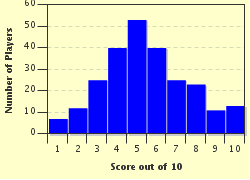Quiz Answer Key and Fun Facts
1. Mary, Mary, quite contrary, how does your garden grow?
With dirt, and sunshine, and lots of water, if you really want to know.
But to grow blue hydrangeas you need a little something extra. If you have pink, purple, or pale and cream hydrangeas, what do you need to add to the soil if you want them to be blue instead?
2. Mary, Mary, quite contrary, how do your flowers get such big blooms?
I sing and speak to them each day, sometimes quietly, sometimes with big booms.
Some people claim that talking and singing to your indoor plants (or plants in a greenhouse) is actually good for them. But is this a myth or a fact?
3. Mary, Mary, quite contrary, why are your apples so sweet?
I add love to every apple tree, that's why they can't be beat.
Speaking of apples, which of these cultivars is also known as the woodpecker?
4. Mary, Mary, quite contrary, why is your corn so blue?
Because, you silly, I grow blue corn. It's true!
Blue corn really does exist. By what other Indian name does it go by?
5. Mary, Mary, quite contrary, why are your plants so green?
Because it is not autumn yet, and the green can still be seen.
The burning bush is so named because, close to autumn time, the leaves turn a deep and dark red color, and it looks as though it's on fire! What is another name for the burning bush?
6. Mary, Mary, quite contrary, how do you tell your herbs apart?
I have studied them and learned each herb by heart.
Many herbs look very similar, but which of these herbs has much more different leaves from the rest, looking more like needles than leaves?
7. Mary, Mary, quite contrary, what kind of grass is this?
It's the very common kind, the Poa pratensis!
Poa pratensis is known as smooth meadow-grass. By what other name is smooth meadow-grass known?
8. Mary, Mary, quite contrary, what is that horrible stench?
Those are my favorite orchids, which sit there by my bench.
There are many varieties of orchids, but which of these would not have a pleasant smell?
9. Mary, Mary, quite contrary, did you see that pretty butterfly?
I bet it likes my Buddleja davidii.
The Buddleja davidii is also called the butterfly bush. But what other name can the butterfly bush be known?
10. Mary, Mary, quite contrary, what is grown over there?
All my purple fruits and vegetables grow in that little square.
Which of these vegetables does not have a purple variety?
Source: Author
salami_swami
This quiz was reviewed by FunTrivia editor
WesleyCrusher before going online.
Any errors found in FunTrivia content are routinely corrected through our feedback system.


